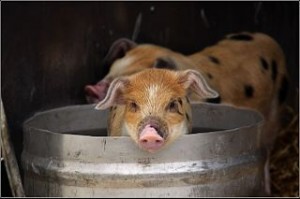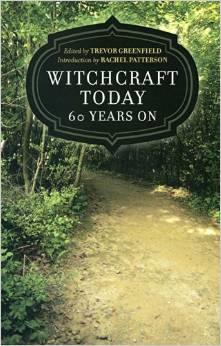 This anthology, published today, is a look at the major branches of witchcraft that have emerged since the publication of Gerald Gardner’s Witchcraft Today 60 years ago. The branches examined in this book have been heavily influenced by Gardner, reflecting to varying degrees not only the practices of the coven he was initiated into, but Gardner’s own reflections and innovations.The first section of the book explains many of the most popular traditions, while the second section is a collection of personal reflections by practicing witches. There is also a brief biography of Gerald Gardner and a discussion of the climate from which his groundbreaking book emerged. You do not need to have read any of Gardner’s work to follow the articles. This book aims to give an overview of what “witchcraft today” has become and how it has matured.I have written the chapter on Dianic Witchcraft for this anthology. It is not surprising that the Dianic tradition is included here – we usually are mentioned in any overview of Paganism and Witchcraft – but this is the first time to my knowledge that the section on Dianic Witchcraft in an overview has been written by a Dianic priestess. There has been so much misinformation propagated by those outside the Dianic tradition over the years that I think it is an important read not only for women who may be considering finding a Dianic coven, but for all witches. I think this background on Dianic Witchcraft is also important for all feminists, even those who do not consider themselves spiritual. Like it or not, a large part of the battle for women’s rights is occurring within religious institutions and frameworks.Witchcraft Today: 60 Years On is edited by Trevor Greenfield and published by Moon Books. It can be purchased in bookstores or on Amazon.
This anthology, published today, is a look at the major branches of witchcraft that have emerged since the publication of Gerald Gardner’s Witchcraft Today 60 years ago. The branches examined in this book have been heavily influenced by Gardner, reflecting to varying degrees not only the practices of the coven he was initiated into, but Gardner’s own reflections and innovations.The first section of the book explains many of the most popular traditions, while the second section is a collection of personal reflections by practicing witches. There is also a brief biography of Gerald Gardner and a discussion of the climate from which his groundbreaking book emerged. You do not need to have read any of Gardner’s work to follow the articles. This book aims to give an overview of what “witchcraft today” has become and how it has matured.I have written the chapter on Dianic Witchcraft for this anthology. It is not surprising that the Dianic tradition is included here – we usually are mentioned in any overview of Paganism and Witchcraft – but this is the first time to my knowledge that the section on Dianic Witchcraft in an overview has been written by a Dianic priestess. There has been so much misinformation propagated by those outside the Dianic tradition over the years that I think it is an important read not only for women who may be considering finding a Dianic coven, but for all witches. I think this background on Dianic Witchcraft is also important for all feminists, even those who do not consider themselves spiritual. Like it or not, a large part of the battle for women’s rights is occurring within religious institutions and frameworks.Witchcraft Today: 60 Years On is edited by Trevor Greenfield and published by Moon Books. It can be purchased in bookstores or on Amazon.
Month: June 2014
What are the women’s mysteries?
June 20, 2014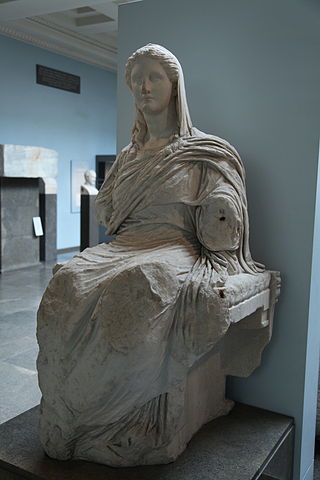
Lady Slipper
June 13, 2014A Lady Slipper is an orchid that grows throughout the northern hemisphere. There are several species, and all of them are rare to uncommon depending on the country. This beautiful orchid is difficult to cultivate, even as orchids go. It requires a special soil fungus for seeds to germinate, and the Lady Slipper does not transplant well. To make matters worse, there is a special demand for this orchid, and not just from gardeners who feel they must have one. The root stock has calming, pain relieving, and hallucinogenic qualities that have prompted overharvesting of the plant, which is never abundant even under ideal circumstances.I have had the good fortune of stumbling across this flower on occasion, ever since I was a girl in Ohio. Last week I was hiking on a popular mountain path when I spied two blooms right next to the trail. I decided to come back early the next day to take a picture, crossing my fingers that no one would arrive before me and take the plants. Sure enough, when I returned the next morning they were gone. I scouted around the area, however, and I found a nice specimen that was slightly better hidden.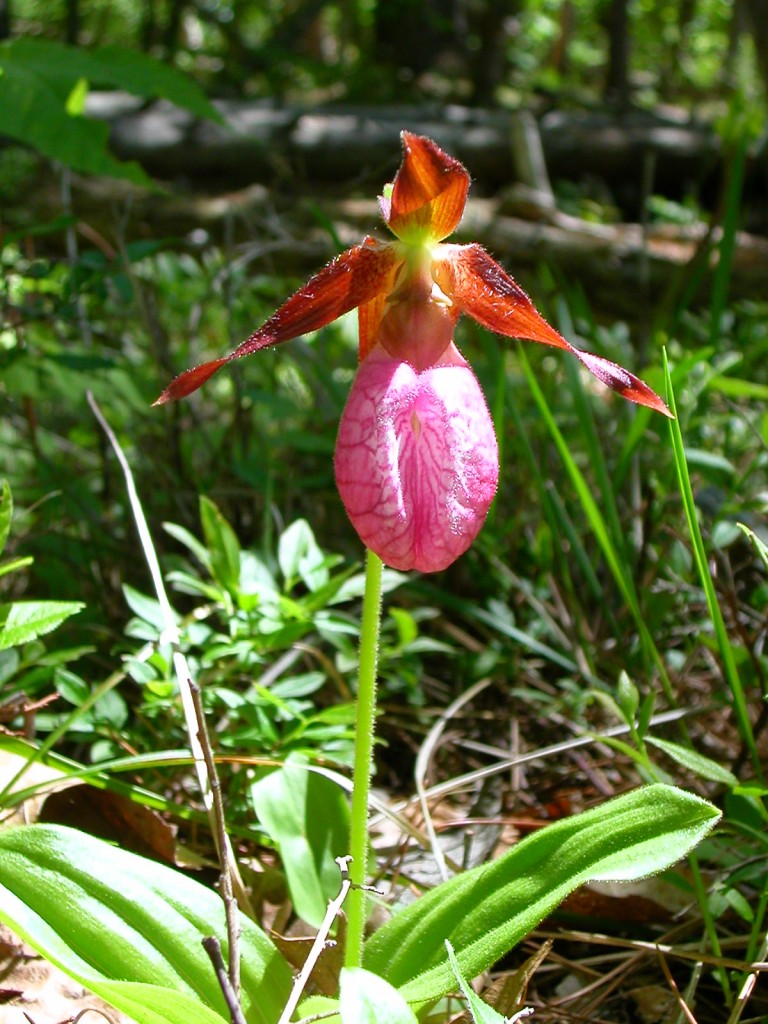 In researching this post I discovered that one variety of Lady Slipper does indeed look like a shoe. I had always assumed from looking at the flower that the name referred to a different kind of “slipper.” What would you think?
In researching this post I discovered that one variety of Lady Slipper does indeed look like a shoe. I had always assumed from looking at the flower that the name referred to a different kind of “slipper.” What would you think? 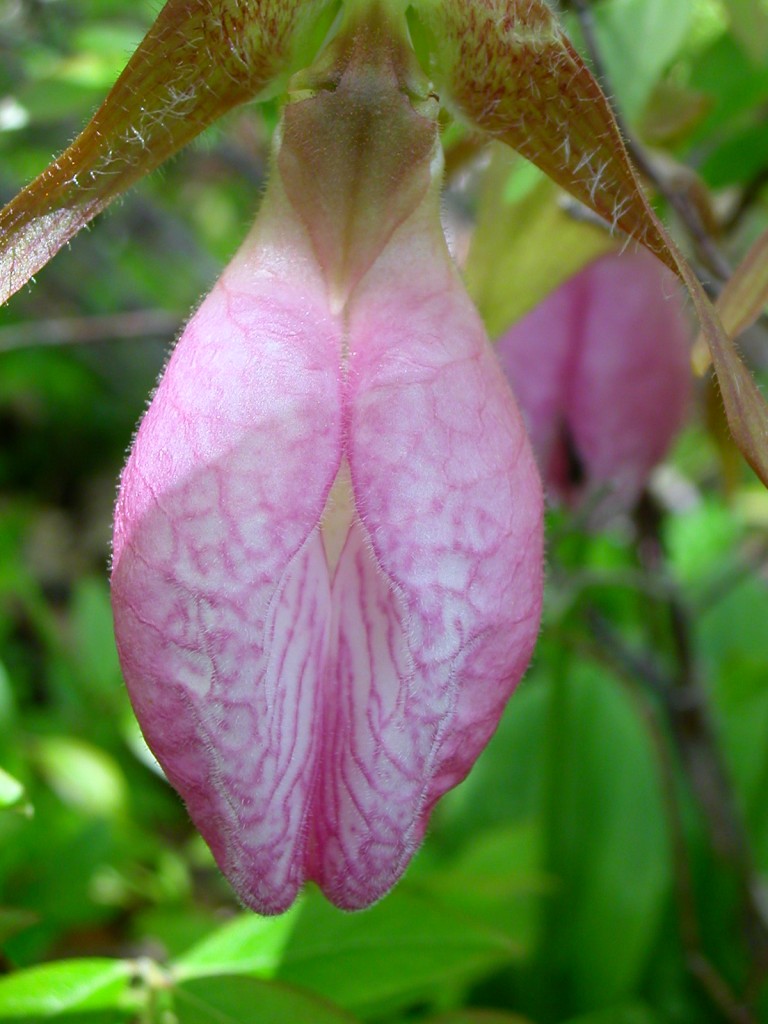 Before heading down the mountain with my photographic trophy, I decided to bushwhack to an open ledge for a snapshot of the view, and I came across a whole clump of Lady Slipper plants. There were seven blooms, one for each of the Seven Sisters (Pleiades). These nymph siblings are priestesses of Artemis.
Before heading down the mountain with my photographic trophy, I decided to bushwhack to an open ledge for a snapshot of the view, and I came across a whole clump of Lady Slipper plants. There were seven blooms, one for each of the Seven Sisters (Pleiades). These nymph siblings are priestesses of Artemis.  SourcesGraves, Robert. The Greek Myths. London: Penguin, 1960.McGhan, Patricia J. Ruta. “Pink ladies slipper (Cypripedium acule Ait.)” US Dept. of Agriculture.
SourcesGraves, Robert. The Greek Myths. London: Penguin, 1960.McGhan, Patricia J. Ruta. “Pink ladies slipper (Cypripedium acule Ait.)” US Dept. of Agriculture.
Looking at the Sow Goddess
June 6, 2014